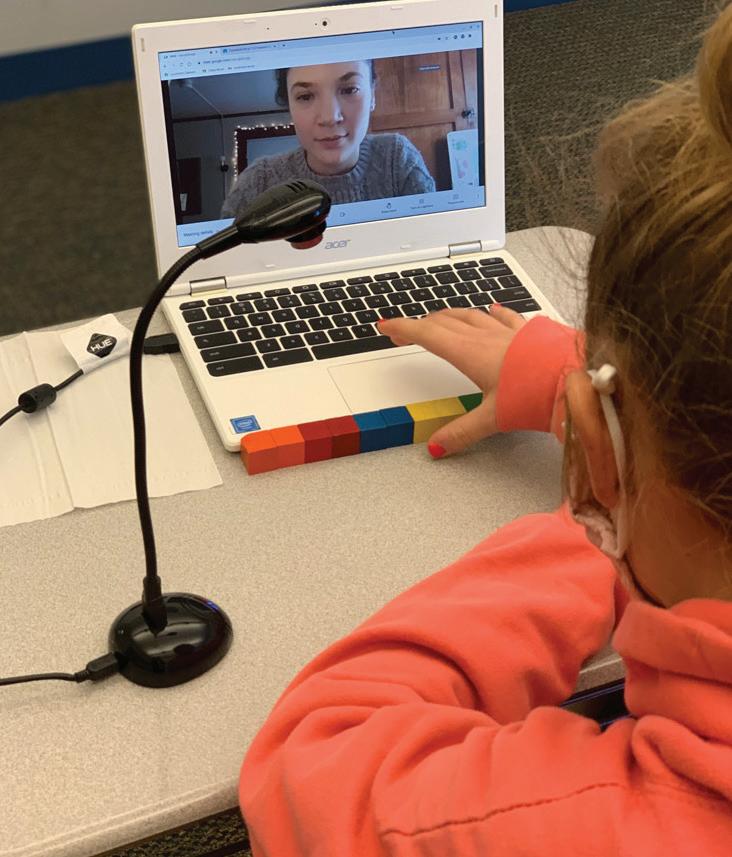
2 minute read
State of the Art
Co-Head of the High School Visual Art Department, Kara Healey, demonstrates a sketching technique to students in the classroom and those joining remotely.
by susan tomases
Advertisement
Masked students sit in front of computer terminals at individual 8-foot-long tables in the Inspiration Gallery, which has been converted to a graphic design and digital photography studio. Some students are logged in, hundreds of miles from Prides Crossing, watching Visual Arts teachers demonstrate a new technique or skill. Student artwork is illuminated to the rest of the class from a document camera projected through a tablet computer and onto a SMARTBoard. This is Visual Arts at Landmark High School in the COVID–19 age.
Electives in the Early Days
Since Landmark opened its doors in 1971 to a fledgling class of just 40 students, the young, idealistic faculty realized that students would need opportunities to shift from reading, writing, and arithmetic to activities that allowed them to free their mind and explore new and creative endeavors. Early offerings included athletics, auto mechanics, performing arts, visual arts, and woodworking.
Founding faculty member and current Headmaster Bob Broudo said, “Getting this place up and running was challenging but thrilling too. We begged, borrowed, and stole (well not really!), and we accepted whatever was given to us. Someone donated a printing press that sat in the middle of the carriage house, which was then, and still is, the home of our High School Visual Arts Department. So in addition to exploring painting, drawing, printing, photography, and pottery, students learned how to operate the press. My father, David Broudo, was the head of Endicott College’s Art Department and a nationally known ceramics artist, and he passed along ceramic wheels and clay. In our Woodworking Department, students made everything from canoes to tables, cutting boards, and even signs. Students repaired donated cars, including a 1964 AMC Rambler Classic 660, and many went on to pursue these fields after Landmark. The creative arts were a way for our students to express themselves, and we wholeheartedly encouraged that.”
Ahead of Their Time
In the early 2000s, as the science behind learning disabilities was becoming more sophisticated, neurobiological evidence proved that physical, hands-on interests provided students more than outlets for stress and creativity. Motor activities help build visual, auditory, and kinesthetic pathways that aid in brain development at the cellular level, affirming the instincts of Landmark’s founder, Dr. Charles (Chad) Drake, who would no doubt be gratified by the dozens of Scholastic Art Awards won by Landmark students annually.
Today, Landmark has added a STEAMworks (science, technology, engineering, art, and math) lab to its elective offerings. “Our teachers are stretched thin and they’re exhausted, but every day I continue to be amazed at how they innovate and find ways to meet our students’ needs, regardless of whether they are on campus or learning remotely,” said Bill Barrett, head of Landmark High School.
Despite the limitations from COVID-19, Landmark students are still making prints, building boats, replacing carburetors, and dancing their way across computer screens and into our hearts.
A sand floor didn’t deter students from playing any manner of games in the new gym.








